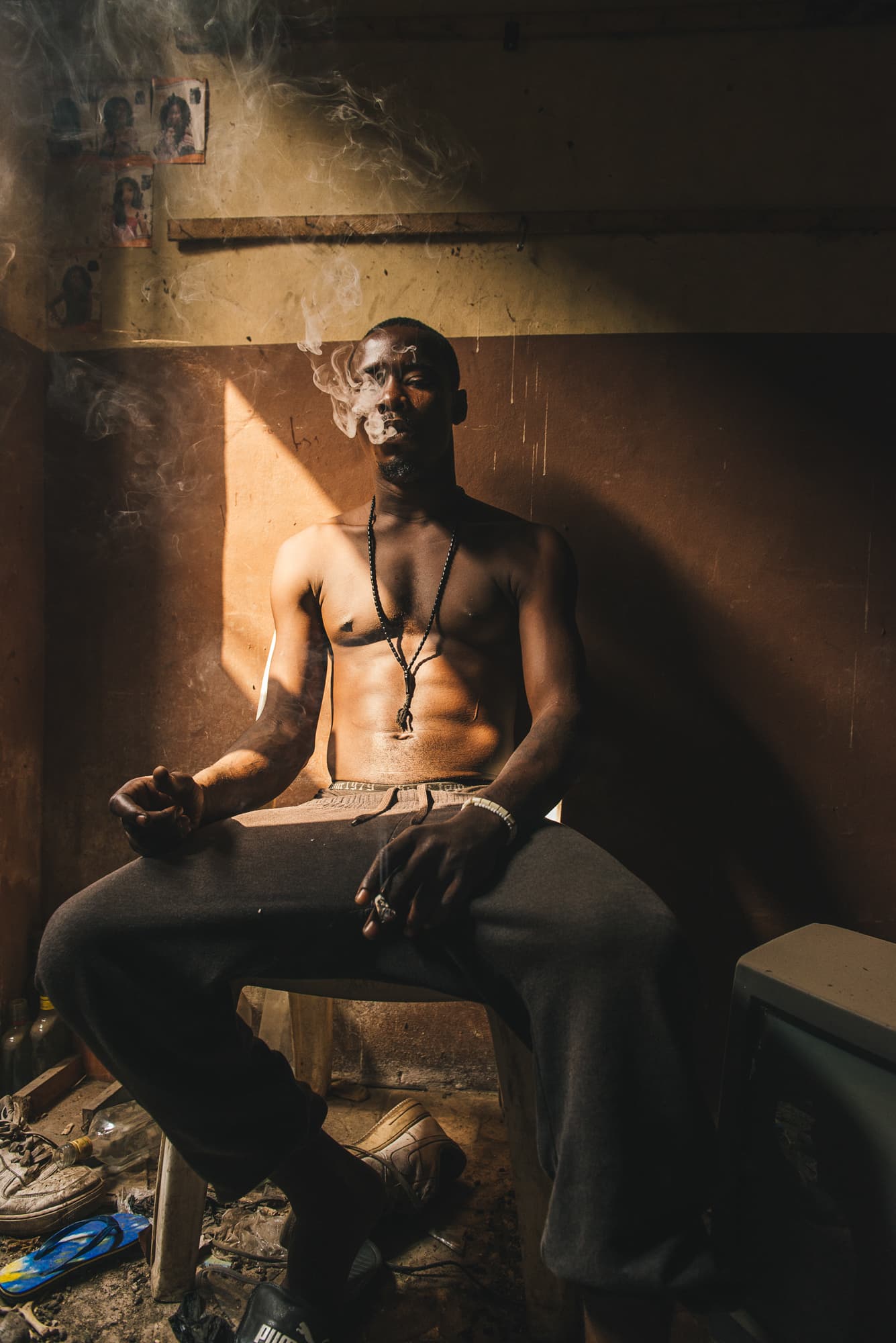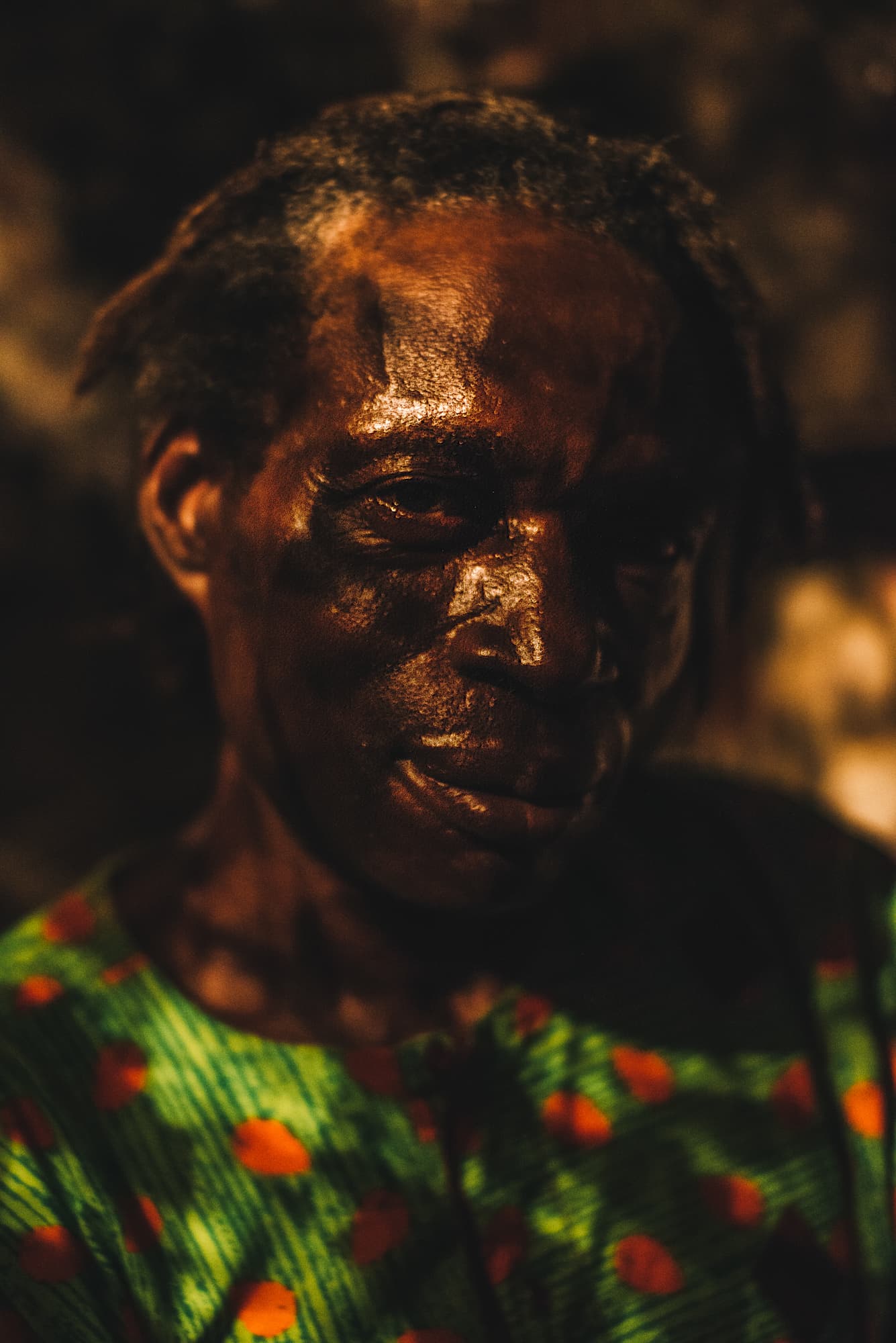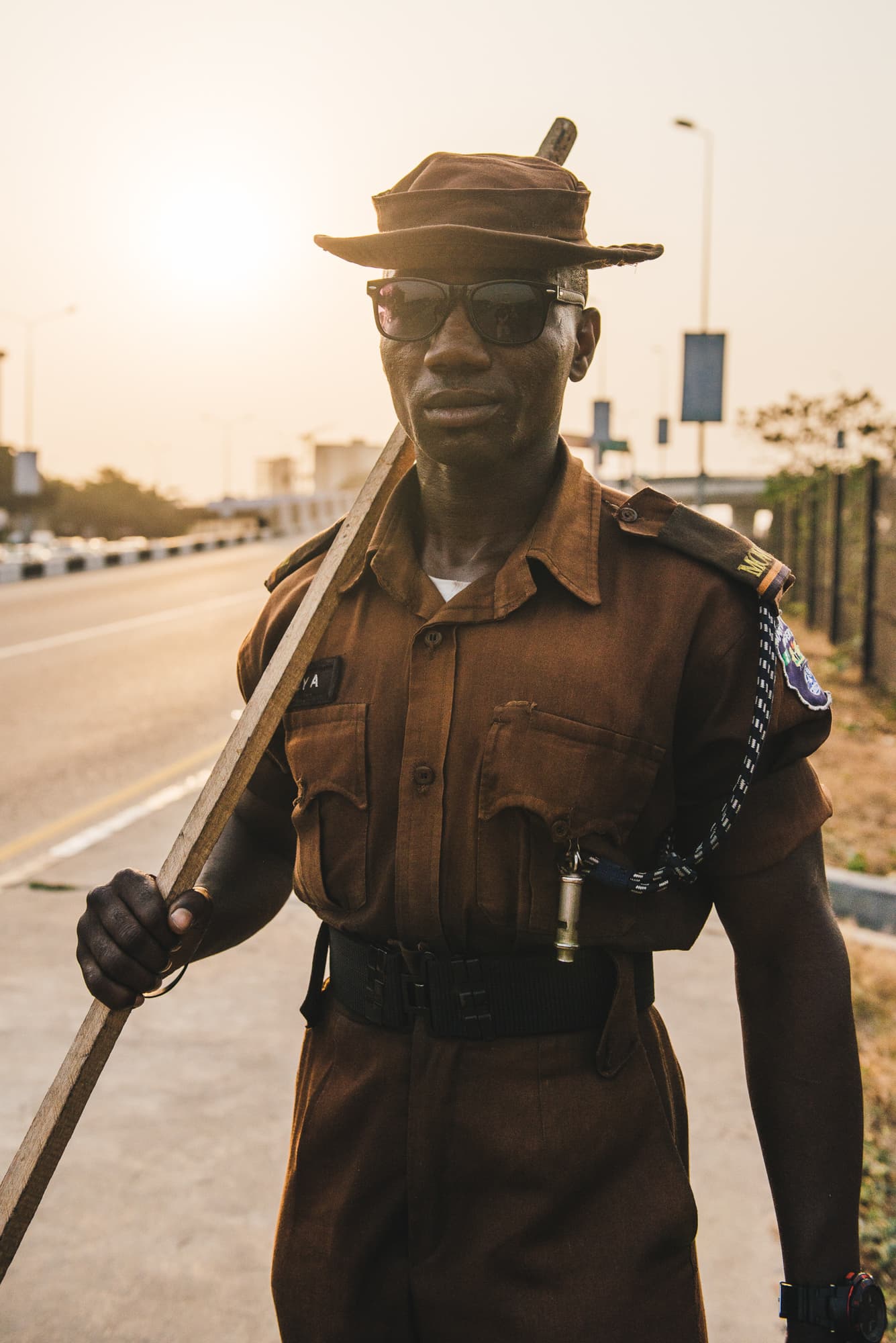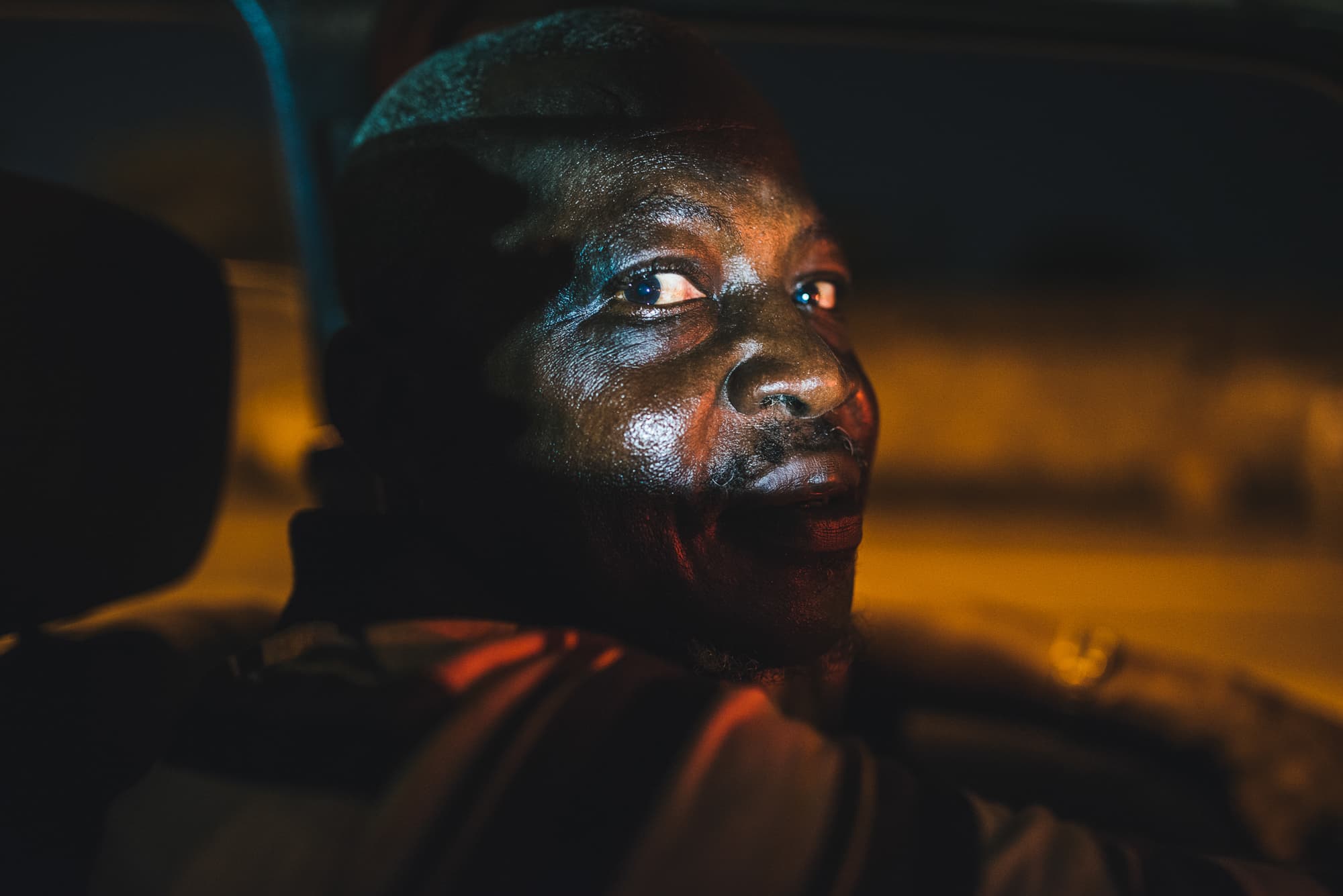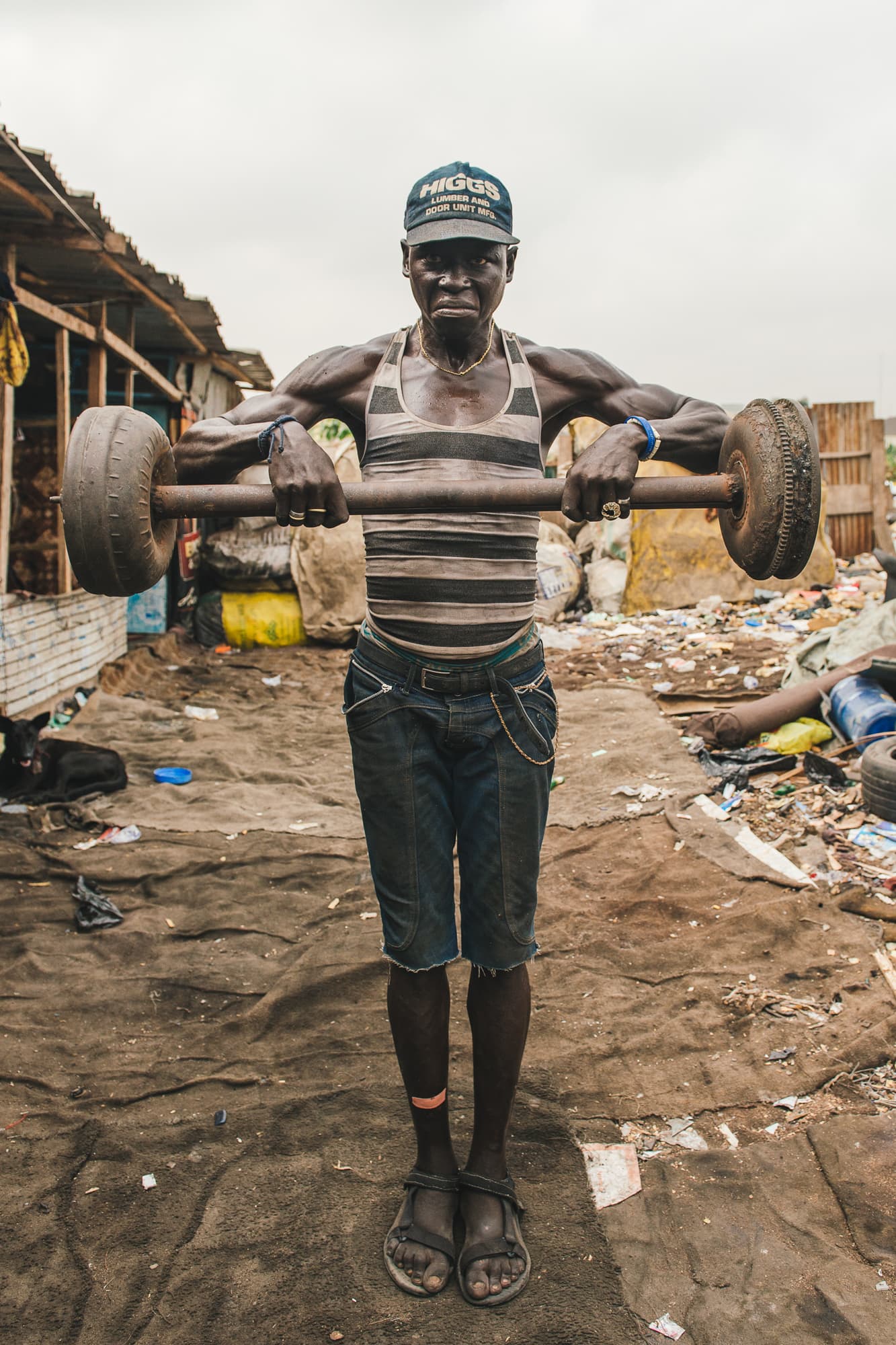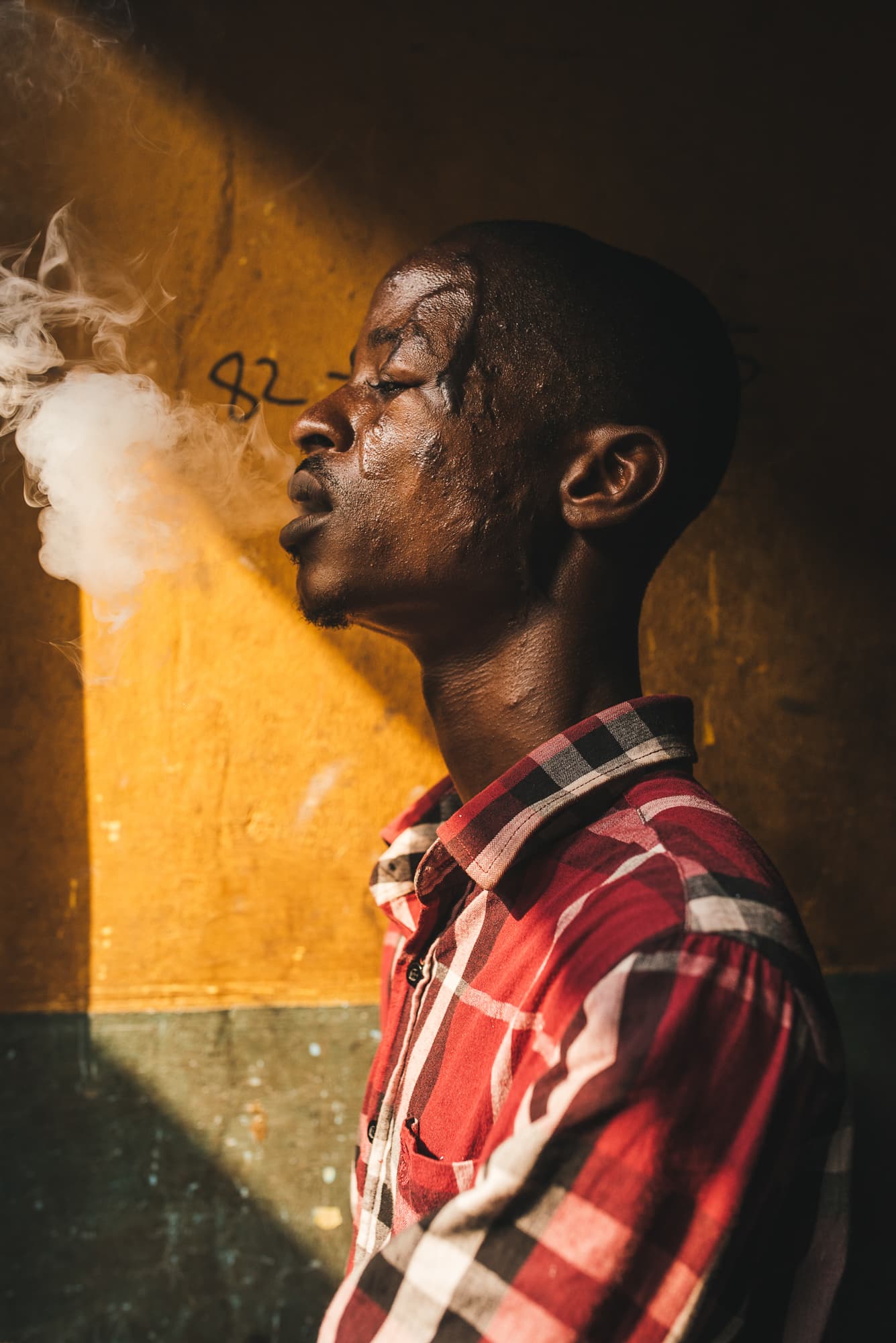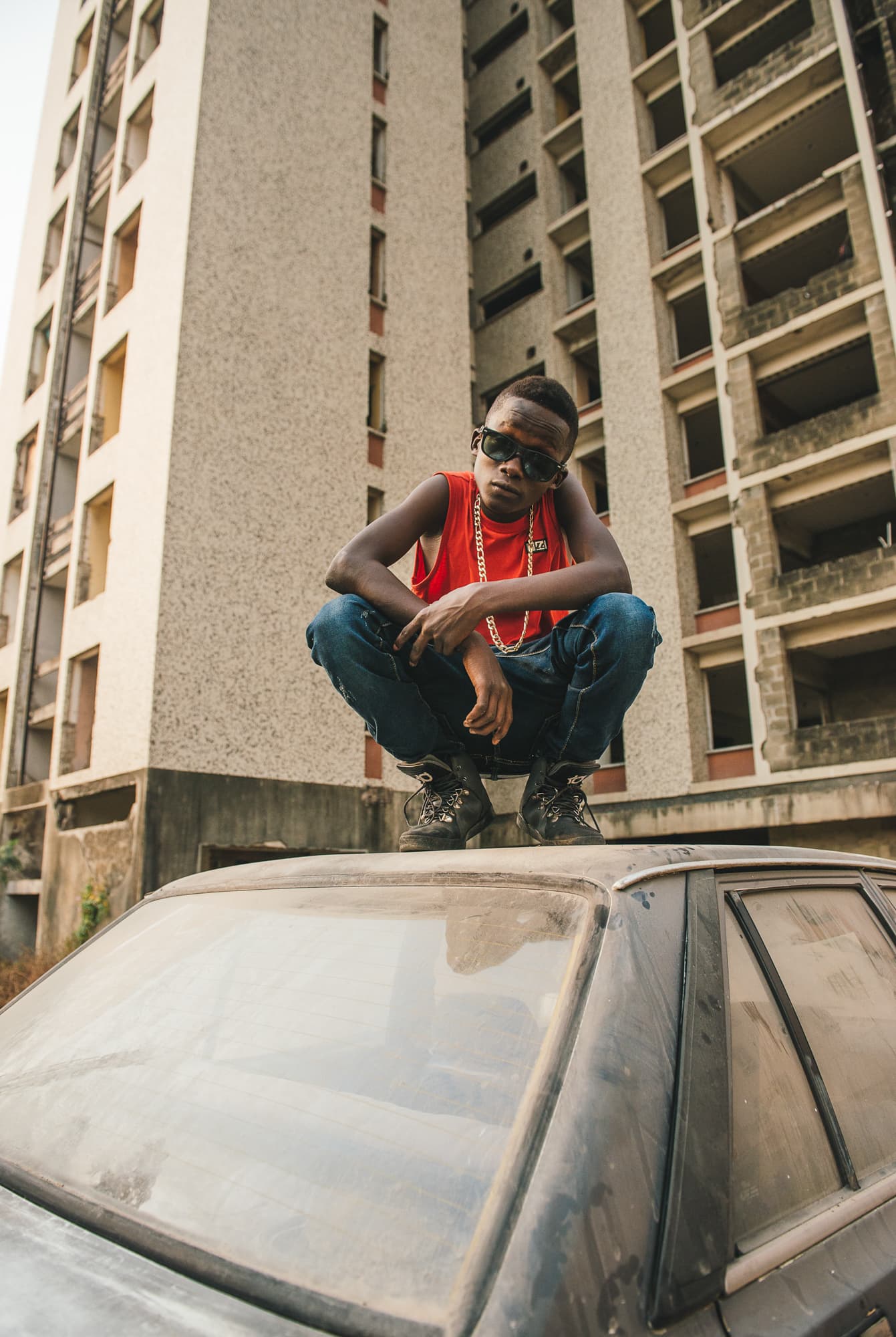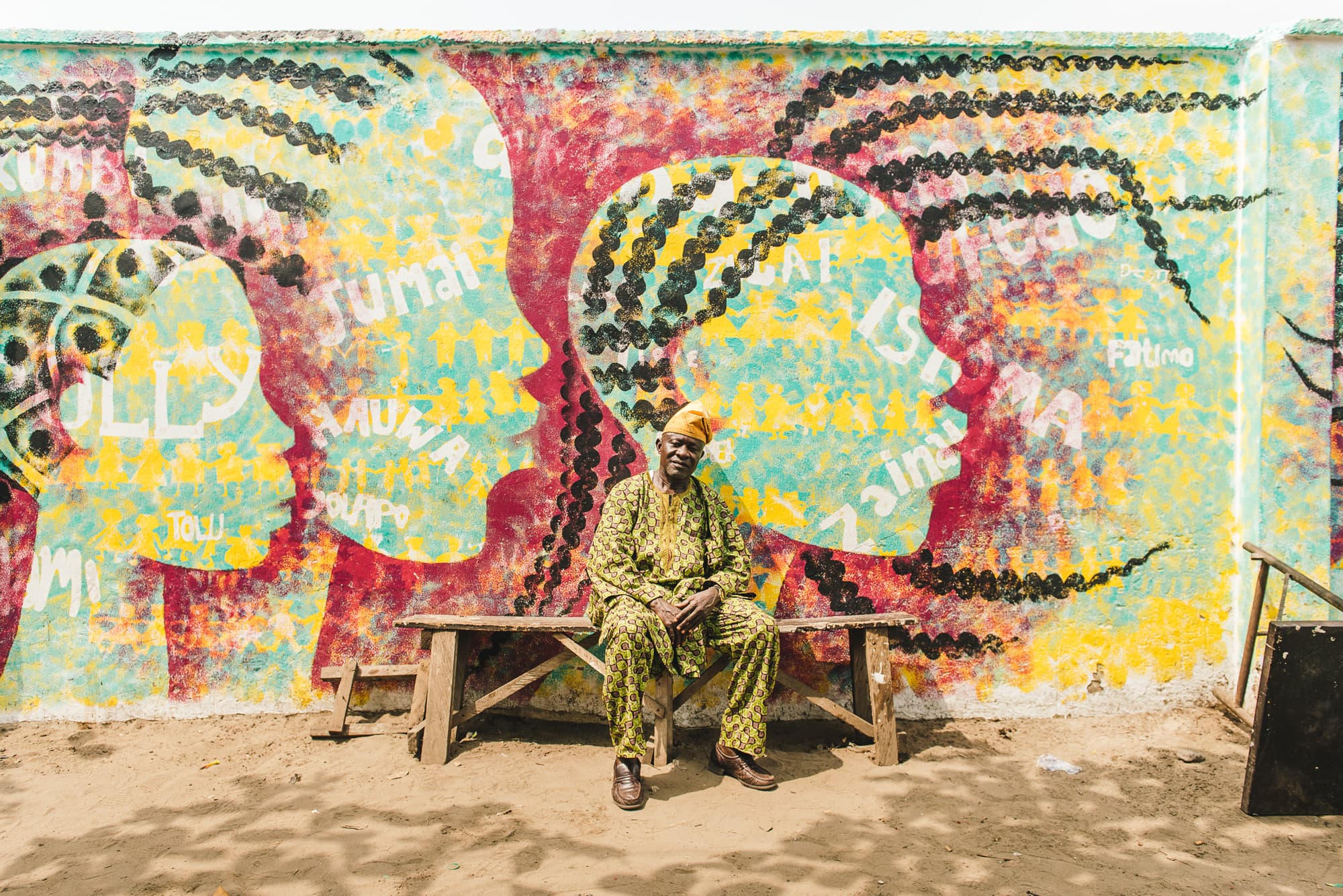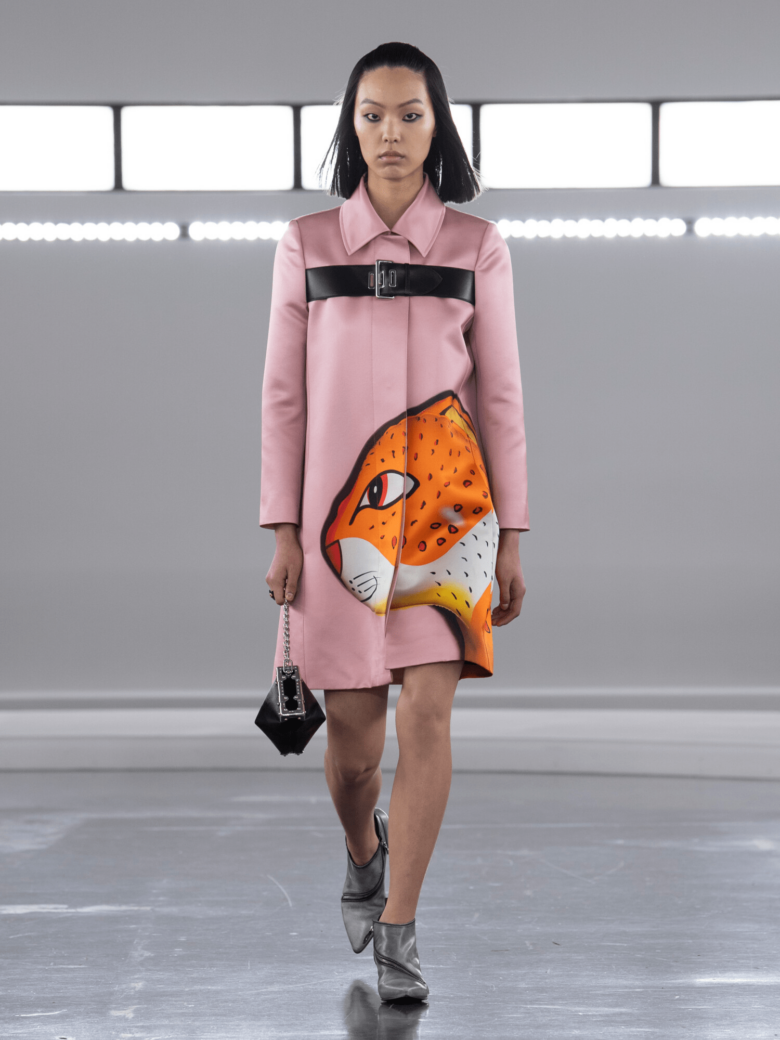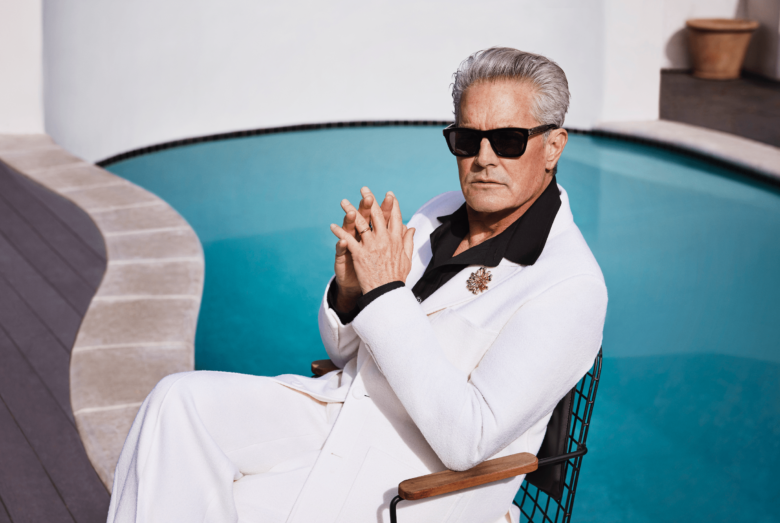Meet the photographer capturing life in Lagos, Nigeria
Based in London, the self taught portrait and documentary photographer is making waves for a project away from home. Heading into the chaotic world of Lagos, Sebastian Barros has captured the unseen lives of many people, and dug deep into the rich culture of the metropolis. Spending over two years in the city, the photographer immersed himself in the unique world, painting a vibrant picture of daily life through the eyes of the various citizens: from musicians to labourers, gangsters to students, hawkers to footballers.
Barros’ series lets you look deep into Lagos just as the photographer himself did. Aiming to authentically document the Nigerian society, Barros’ project expanded to a collaborative documentary with filmmaker Alex Simpson entitled Dambe. Following the life of Taye a Dambe boxer of the Hausa people of West Africa, the exhibition has become a specially constructed immersive experience, bringing the sights and sounds of Lagos into Juju’s Bar and Stage in Ely’s Yard, London. We caught up with Sebastian Barros to find out more about the upcoming exhibition and how he found himself here…
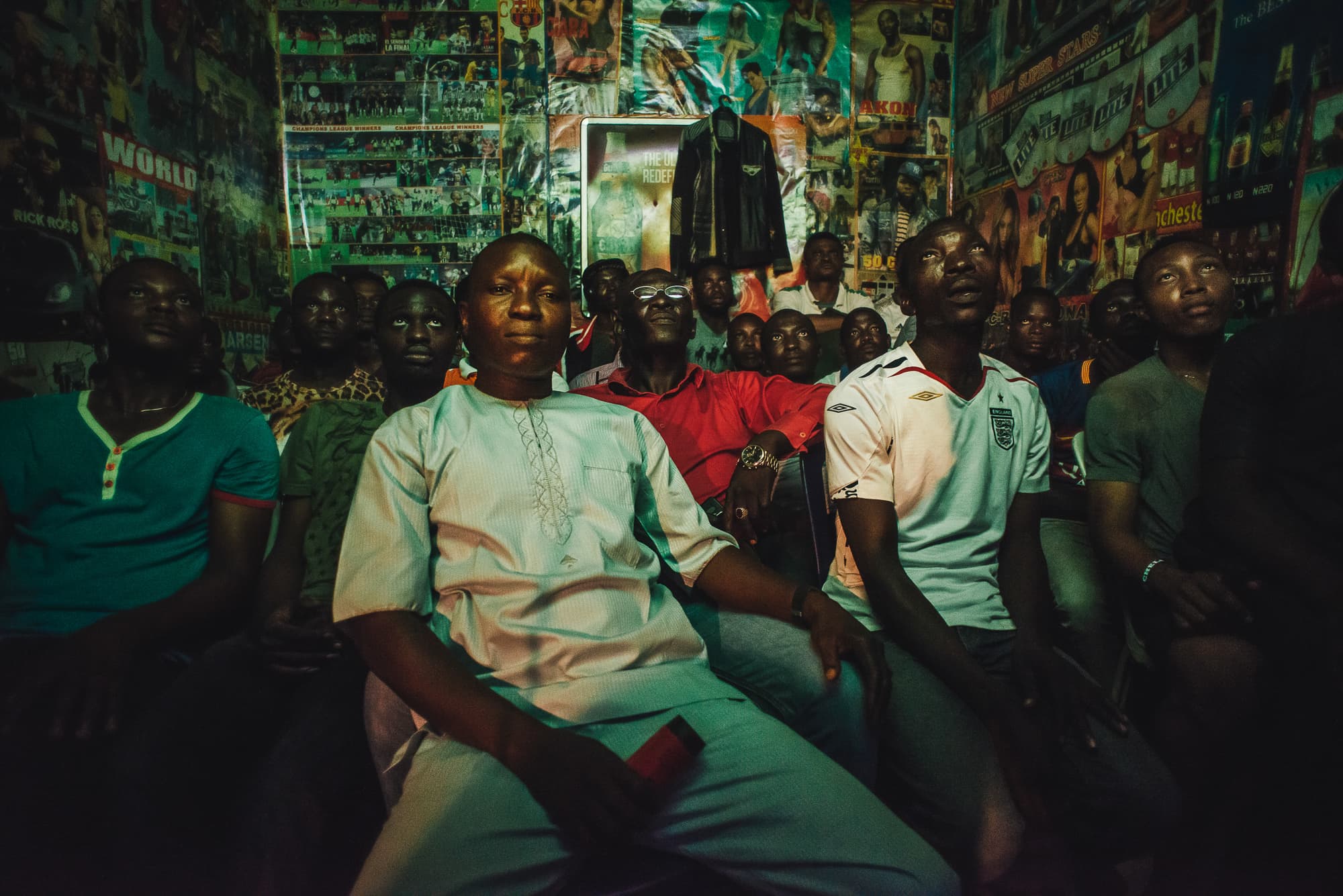
What inspired you to document Lagos?
It was partly inspired by one of my friend who at the time was out in Iraq and Syria reporting on the conflicts there. We would to talk a lot about her experiences out there and really blew my mind and got me thinking about lots of ideas for a photo project. While doing my research I would spend a lot of my time watching documentaries and came across one titled ‘Welcome to Lagos’ it was a few years old, but it painted a picture of a city that was entrepreneurial but chaotic, sprawling and dynamic, and from that moment I knew this was where I had to go.
What is your process like when you’re shooting?
It starts way before I pick up a camera, by doing research. As I said before, I tend to watch many documentaries when doing this as it gives me a lot of information all at once about a place or subject I’m looking to photograph. It also aids the creative process by helping me to visualize what the end result will look like. After this, I would start to talk to my fixer on the ground so he can begin to make arrangements before I head out there. It’s never straight forward working out in a place like Lagos, you always need to request permission from someone or in some cases a series of people (all usually quite random) before you go shooting in an area. As I mentioned before Lagos is nothing if not entrepreneurial – So having a fixer on the ground really speeds up the process. My fixer was ummmmm a pretty interesting guy, to say the least! He had some pretty strange conversations to try and get me into certain places such as the refuse centres and saw mills and on trips with the sand miners. When It comes to shooting it’s all pretty organic from then on.
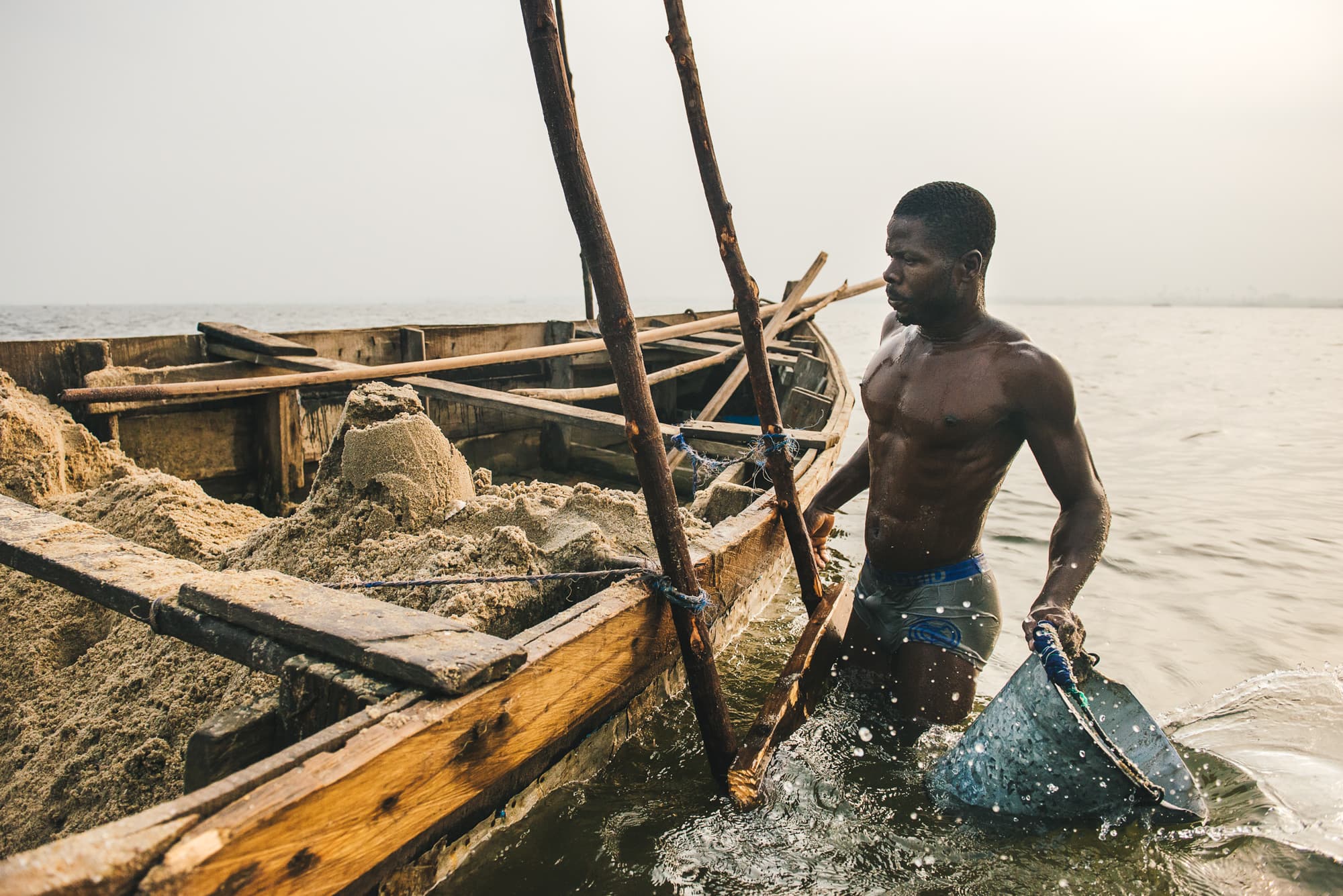
What was the stand out experience in Lagos?
Wow, there are so many, but if I had pick one, it would be from my last trip out there to make a documentary film about the life of a Dambe boxer called Taye, collaborating with my friend Alex Simpson. I had just finished a very long first-day shoot on the rooftops of an abandoned block of flats on Lagos Island where we were filming the training scenes. The next day we headed out of Lagos to the fight arena where Taye was top of the bill to shoot it. I had to leave for London the next day, so everything had to run smoothly, which is where I ran into my first problem, as I mentioned before nothing is straightforward in Lagos, so it’s good to have time on your side. We got off to a good start though, capturing lots of b-roll footage outside the fight area and that’s when we began to notice the crowds leaving and going home. Timothy (my fixer) went to investigate; we were due to shoot Taye’s fight scene at midday, any later and it would be too hot for the fighters and the crowds. There’s nothing like an anti-climate to a boxing film where the final scene is played out to an empty arena, that would have put an end to it. To say I was pretty stressed out would be an understatement. But Timothy the legend that he is manages to get the fighters to start fighting again, it turned out the chairman who we had given money to get permission to shot hadn’t paid them, so Timothy had a word with him. Now we had to get the crowd back, and we had just under an hour to do it. Timothy steps up again; he got the chairman to let everyone in for free and got some guys to jump on a motorbike with a loudspeaker and drive around the area letting everyone know it’s free entry, what a hero! Shame we didn’t film that part, it would have made for quite a dramatic scene. Just after midday day and with no time to spare the arena was full enough so we could start filming Taye’s fight. After everything else going wrong, this went right, and we got some excellent fight scene footage. I don’t think I’ve ever experienced such extremities in emotions than I did in that hour leading up to the fight, the story about making this film is just as exciting as the one we made. I remember coming back and watching the behind the scenes film at the end of Blue Planet 2 and having a huge appreciation for what they accomplished in such challenging environments.
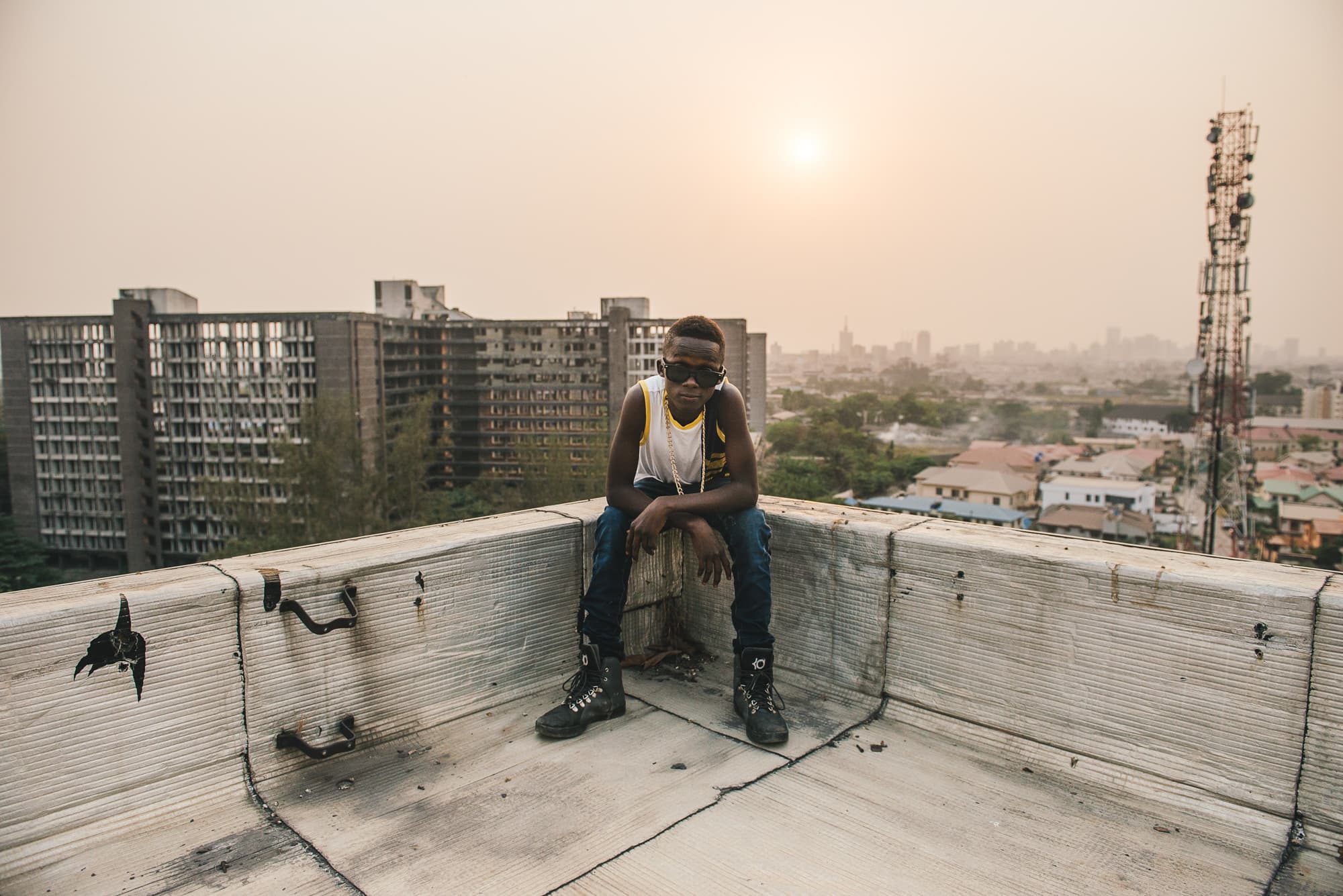
Who or what has influenced you the most over your career?
My first significant influence was a photographer called Dariusz Klemens. I went on a travel photography workshop around Rajasthan, India for three weeks and he was leading it. This was back in 2010 before I went pro but those three weeks were a game-changer for me, I learned so much than the previous 4 years as an amateur. Dariusz taught me a vast amount about composition and the art of storytelling and gave me the confidence in my work to make the jump to pro two years later. A year or two after I turned pro I was lucky enough to work with to legendary photographers in Danny North & Andrew Whitton, working on alongside them at music festivals. This was the first time I work on a team with other photographers, it was long hours and super fast paced, but Danny & Andrew where amazing cultivating a team atmosphere and camaraderie amongst us photographers who before were used to working alone. As busy as it got they would always make time to go through my work advising how best to improve it. What I learned from them the most was how to shoot consistently well in unpredictable environments and be able to pick out the best shots amongst the mayhem that a music festival throws up. The knowledge and experiences I gained from them definitely served me well when I headed out to Lagos.
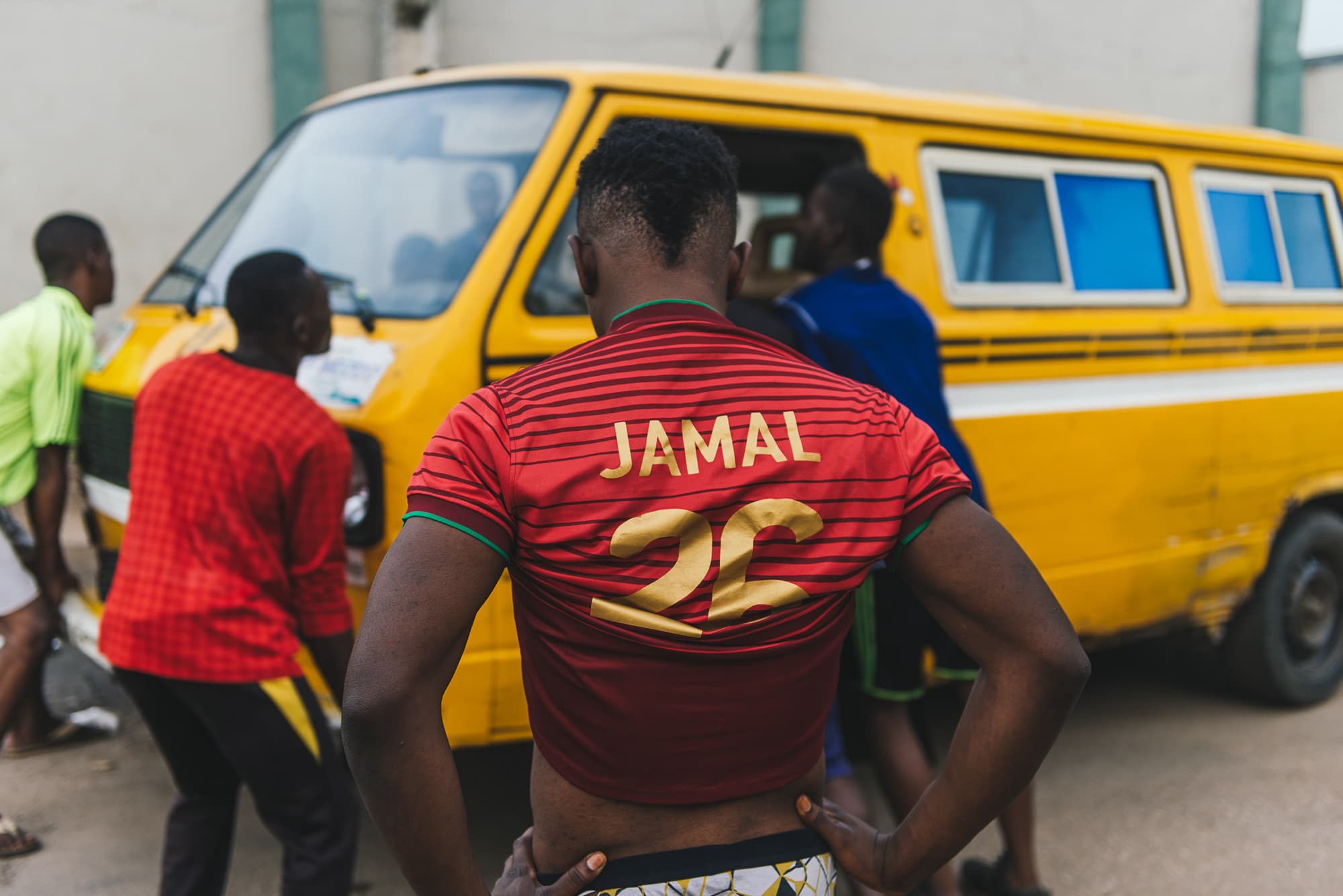
Your work sheds light on some vital social issues, do you think art has the ability to evoke social/political change?
I think so, yes. The power that art has is to connect people to their senses, body, and mind and this feeling can spur thinking, engagement and action. I feel like in my work I’m not trying to encourage the viewer into action but to engage their senses and for a moment be taken into the world they see in the image and the try to empathise with the subject.
Do you feel like social media is changing the art world? Do you think it’s positive?
Yes and No. I feel the negative impacts is that social media has put this pressure on artists to be continually creating work to feel relevant and creating a mindset of quantity over quality which is the opposite of what art is. The positive side is that social media is has made it possible for artists from all over the world to collaborate and be inspired by without necessarily having to travel those incredulous distances. It should like all things new be embraced but not abused I feel like an artist if you’re going to use social media to promote and share your work you need to do it with integrity and respect both your audience and the medium.
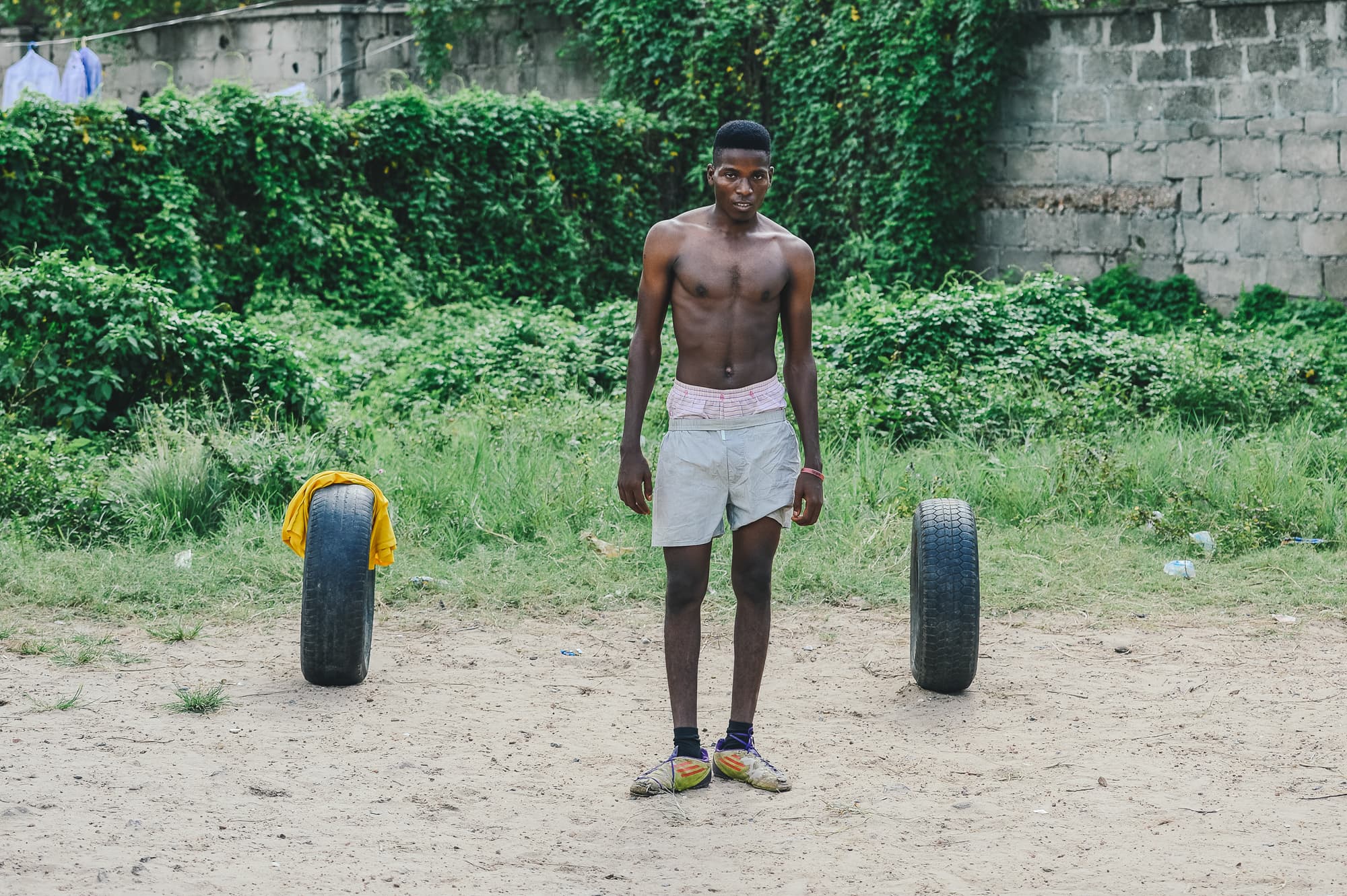
Where would you love to head to next?
My last project in Lagos I started to explore traditional sports amongst the ethnic groups that live there and made a short documentary film with Alex Simpson on the life of a Dambe Boxer. For my next work, I want to expand on this across over parts of West Africa in places like Ghana and Senegal where traditional sports are quite popular within those communities. You really get the feel of a community when exploring traditional sports.
See more of Sebastian Barros’ work online here.
